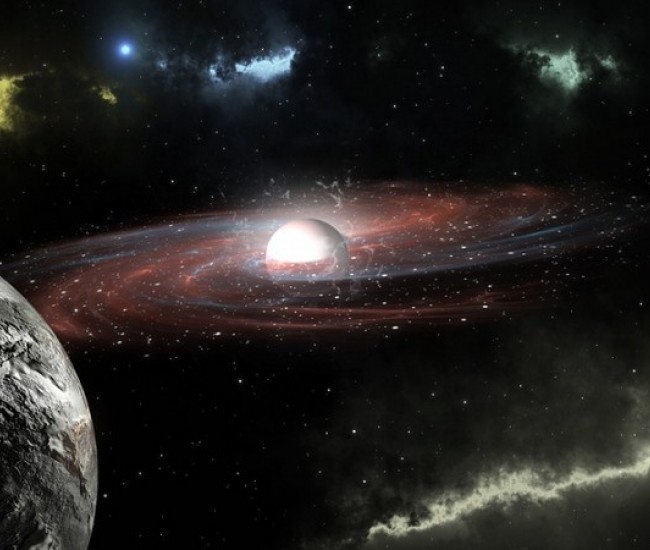Several planetary mounts can be created by the physical process discovered by an international research group led by Zsolt Regály, a senior researcher at the Miklós Konkoly Thege Institute for Astronomy of the ELKH Center for Astronomy and Earth Sciences (CSFK). The new planetary hypothesis might explain, among other things, how Earth-like planets or giant planets the size of Jupiter formed.
The discovery was reported by the researchers in the Monthly Notices of the Royal Astronomical Society, the Eötvös Loránd Research Network (ELKH) reported on Friday.
As the paper reads, although the most common objects in the universe are planets, we don’t fully understand their origin.
In the twentieth century, the idea of stars forming amid massive gas clouds became accepted. During the process, momentum is retained and the remainder of the gas cloud collapses into a disk. This is the protoplanetary disk in which planets form.
Researchers have developed various theories about how a planet condensed from these remnants. According to the current knowledge, there are two different hypotheses of planetary formation: one is the theory of gravitational instability and the other is the theory of planetary core accretion.
The process of planet formation itself is so complex that the behavior of these contracting gas clouds can only be studied using numerical simulations, that is, they can only be modeled using high-performance computers. Based on this type of study, the two previous theories are not entirely correct.
An important consideration in planet formation is that protoplanetary disks do not exist forever and generally have a lifespan of less than five million years. So at that time, the planets must be created. For example, the formation of Jupiter initially required the accumulation of approximately one tenth of Earth’s masses of solid matter and then approximately three hundred times the mass of its gas mantle.
Gravitational instability is the same physical process that creates stars. Examination of numerical hydrodynamic simulations led to the conclusion that a mass of gas the size of Jupiter could not condense because during the process the gas heated up so much that it did not allow the material to condense further. Thus, the theory states that the theory is not only at great distances from the star due to the physical properties of the protoplanetary disk.
According to the hypothesis of planetary core accretion, small dust particles in the protoplanetary disk gather together during their collision, and then planetary spores accumulate, which later grow into planets. As they write, several issues are known by this assumption. One of the biggest is that in the process, solids that have grown to the size of rocks – the so-called planets – rapidly fall into the star due to the fluid resistance of the disk gas, so the building blocks of the planets quickly disappear from the disk.
An international research team led by Zsolt Regály has discovered a physical process that can create a large number of planetary thrusters in the protoplanetary disk, providing a possible explanation for the formation of giant planets similar to Earth or the size of Jupiter.
So far it is known that anti-vortex vortices can form in protoplanetary disks, where gas orbits in the opposite direction of orbit around the star. Anti-vortex vortices can collect solids very efficiently, which increases the possibility of dust particles meeting and sticking to each other. In addition, such a vortex protects the planets that formed there from falling into the star, so that the vortex creates ideal conditions for planet formation, the report states.
The dynamics of gas and dust particles are affected by the viscosity of the disk, that is, the degree of internal friction of the substance in it. According to the new theory, the viscosity of the disk depends on the amount of dust present in the environment. The reason for this can be found in the fact that the viscosity of the disk is formed by a complex process, the interaction of free ions and the magnetic field of the star. The researchers hypothesized that the dynamics of the protoplanetary disks are also affected by the dust itself, as it can bind free ions in the disk, reducing the amount of viscosity.
If a small amount of condensing dust appears somewhere in the disk, then the number of free ions will decrease there and therefore the viscosity will be lower. When the viscosity decreases, the density of the gas also increases due to the dynamics of the gas, which absorbs dust, as a result of which the viscosity decreases even more. As a result of this positive feedback, tiny vortices are generated that create new vortices.
The researchers used a two-dimensional numerical hydrodynamic simulation to study the number and stability of the vortices; How much dust is collected? According to the study, the vortex chain creates long-lived vortices that rapidly morph into potential planetary mounts, which could lead to the formation of an entire planetary system. Research has shown that planetary systems can form much faster than scientists previously thought.
Based on the foregoing, it can be said that this unique discovery may explain the long-sought phenomenon of planet formation. In order for the hypothesis to gain complete certainty, a more detailed and three-dimensional study of the vortex cascade is still required. Continuing the project, researchers will also be able to get an answer on how the solar system and distant planet systems of significantly different structure came to be, the results of which are summarized in the ELKH statement.






